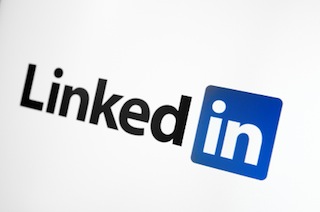 |
If you need to verify a journalist's credentials in a pinch, or are looking to access a group of like-minded business professionals, look no further than LinkedIn. According to the 2011 Arketi Web Watch Media Survey, the number of journalists on LinkedIn has increased by 85% since 2009, and 92% of journalists are now on LinkedIn—more than any other social network.
Jim Nichols, vice president of digital at communications firm Stern + Associates, says LinkedIn provides value to both sides of the media equation. "Journalists need to think about career development as much as any other professional, and many are there to network and find out about future career prospects both outside and inside the media sphere," says Nichols, who notes LinkedIn's SEO through Google's newer algorithms have enabled LinkedIn profiles to rank high in search results. "A person’s career information, education and credibility is instantly available, which is hard to gauge on Facebook and impossible on Twitter," says Nichols.
What makes LinkedIn the most widely used platform by journalists? Its user profiles are generally written to be credible and closely resemble resumes. While working as a meteorologist with NBC WeatherPlus, Nichols says he was constantly sent phony weather pictures via Twitter, and that LinkedIn has a better system for verifying and organizing a person's background and can be used can be used as a first stop—but not a final stop—in verifying a source. "LinkedIn is not perfect, but it provides a quick and easy way to get key facts about an individual in a quasi-bulleted list to gauge the credentials of a source," says Nichols.
From a PR viewpoint, Nichols encourages all his clients to have the most important facts about their credentials ready in a bulleted or brief format on LinkedIn, and to share all articles/blog posts on the site. "If you write for a professional field, such as business or consulting, the groups feature on LinkedIn can be powerful for sharing content, so it is important to post your content on your LinkedIn profile and share it with relevant LinkedIn groups."
Nichols says many PR pros are neglecting to optimize their profiles to display articles, blogs, slides and even videos as ways to inform a journalist or business prospect about their credibility, presence and expertise. He also notes that there are groups where clients can engage fellow thought leaders and get their word out. The biggest issue, according to Nichols, is remembering to keep updating one's presence on LinkedIn.
"In many ways, LinkedIn is treated like a resume—often forgotten about and then spruced up at the last minute," he says. "It’s time for LinkedIn to be included in regular social sharing.”
Nichols cautions that LinkedIn's strengths lie in keeping tabs on a journalist’s movements throughout an industry and verifying the fields they cover, rather than in making pitches.
To hear more from Jim Nichols on how to tap into LinkedIn's expanding user base for your PR efforts, register now for PR News' Digital PR Summit, to be held October 5 in New York City.
Register for the September 5 PR News Webinar: How to Use LinkedIn as a Powerful PR Tool.

Great suggestions. Maybe LinkedIn is more credible, because one has to pay for the extra features. I use it more for professional comments/communications, and Facebook for personal/social communications.